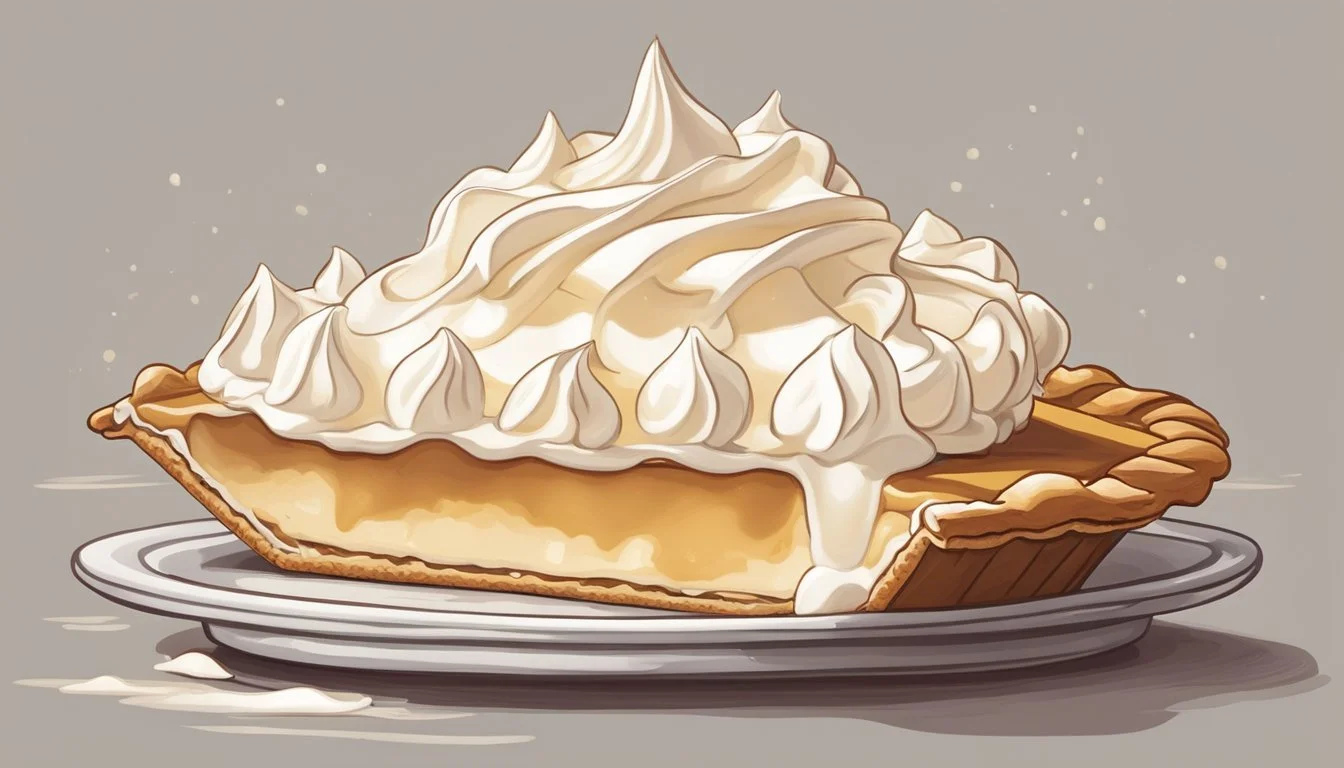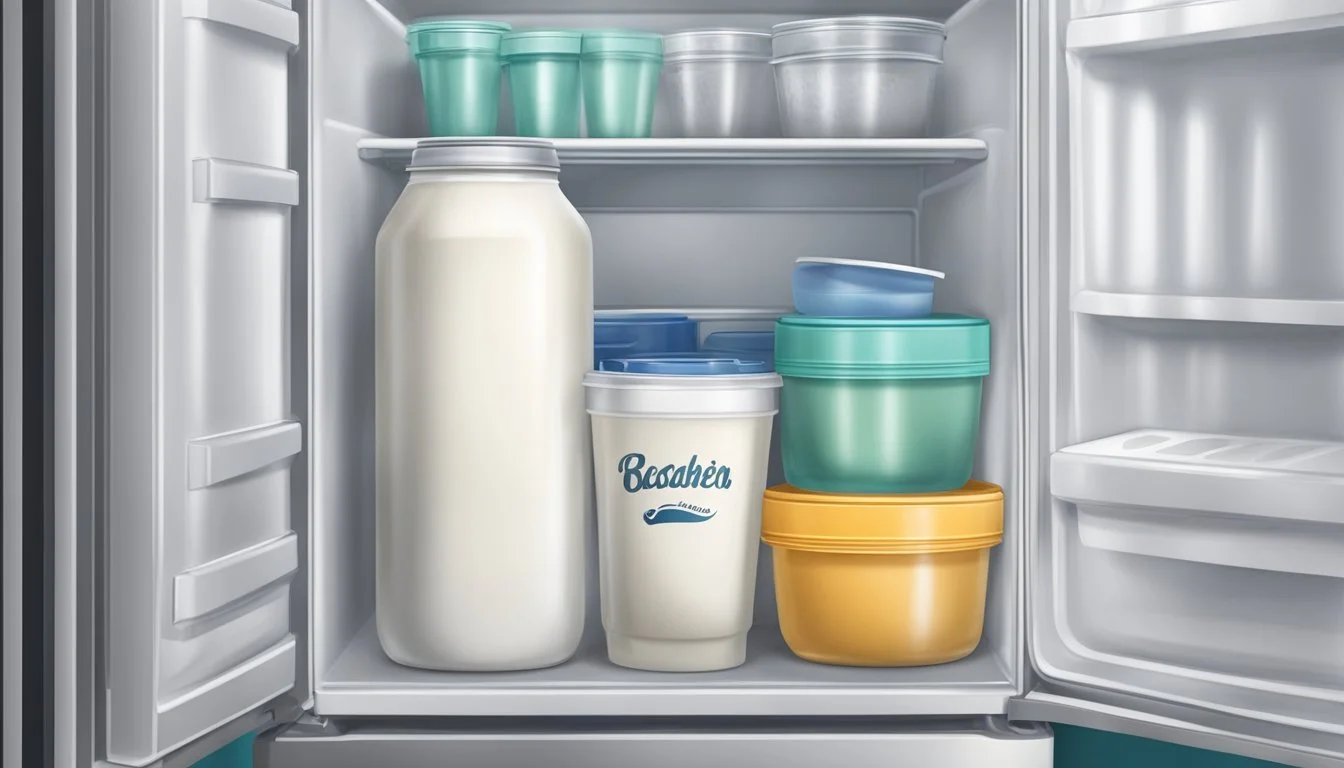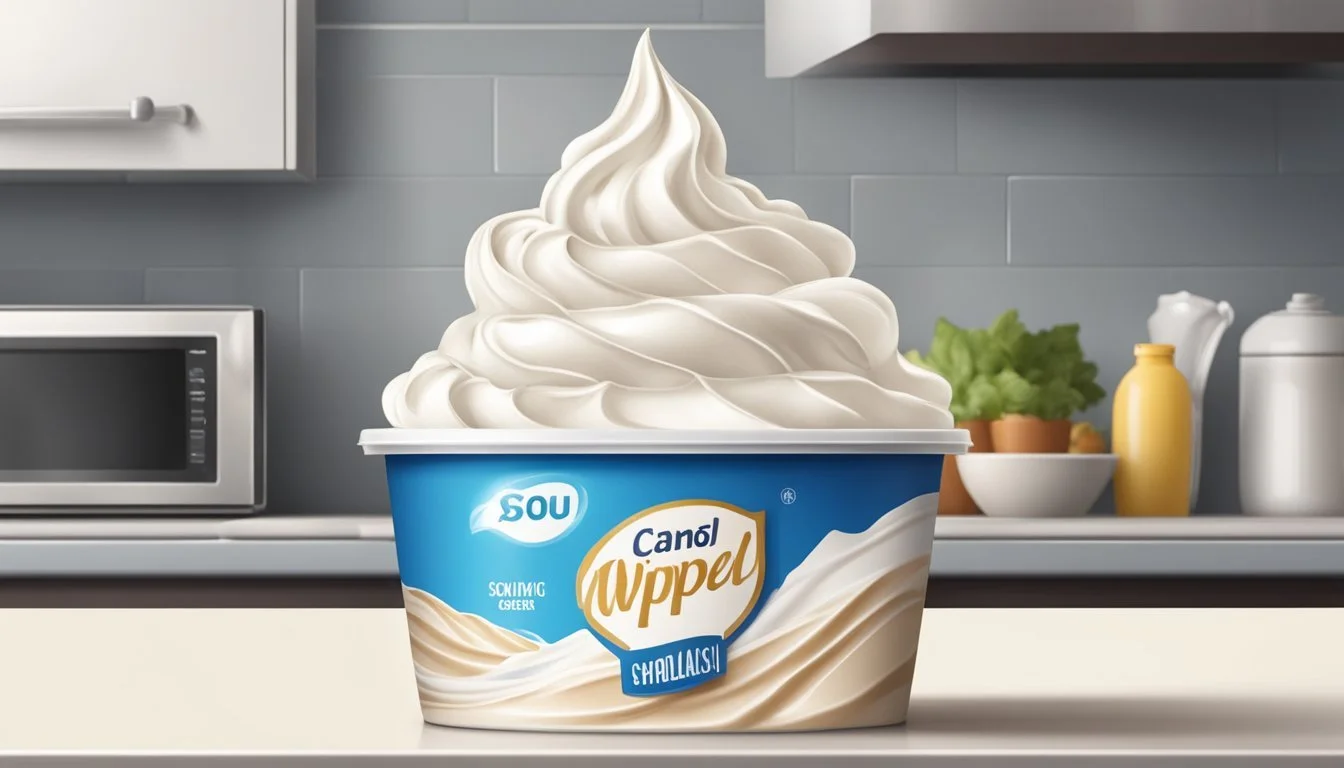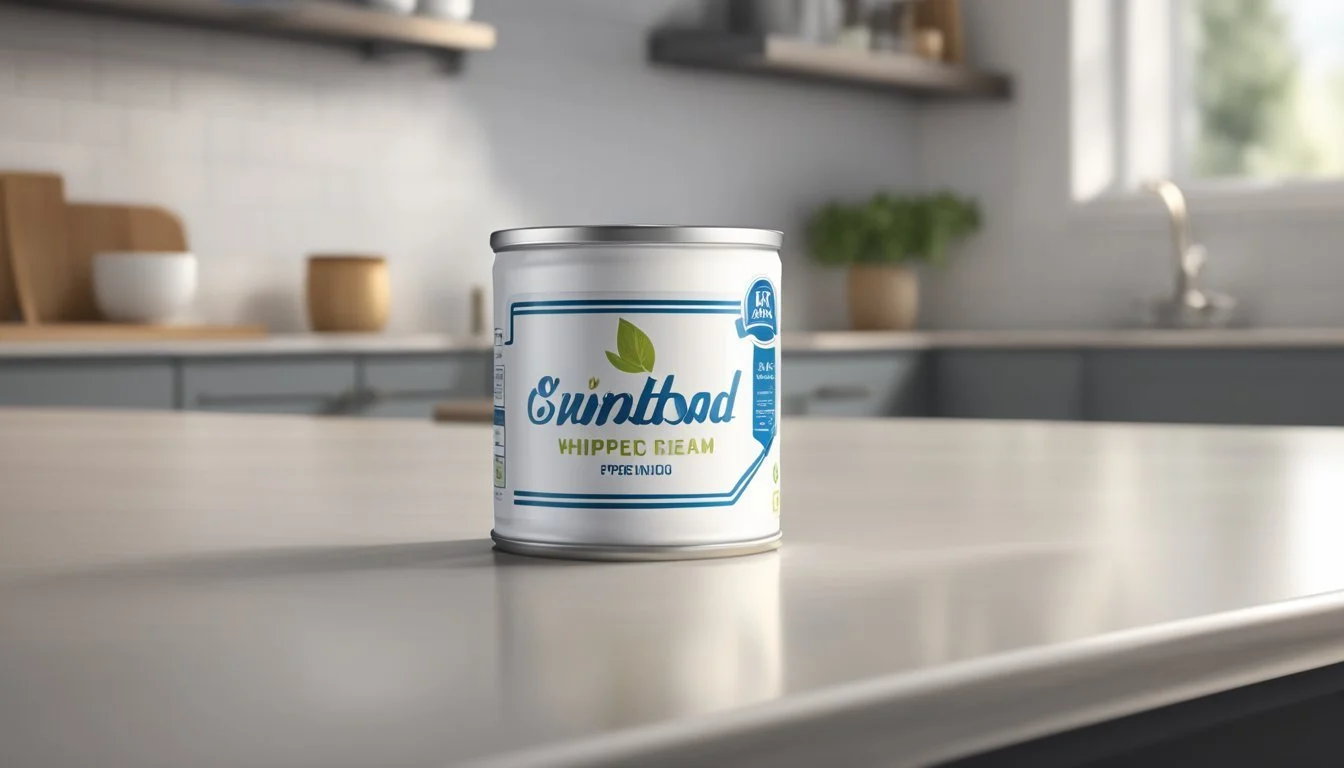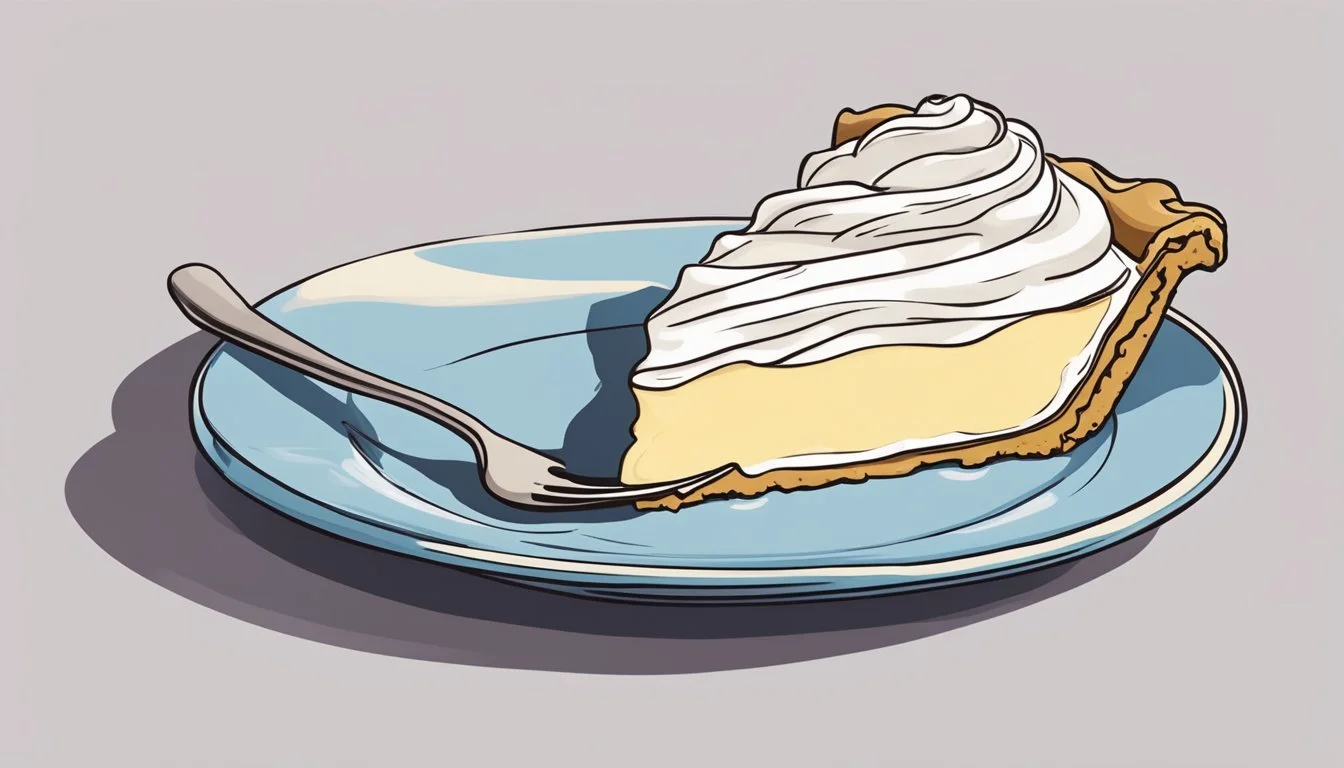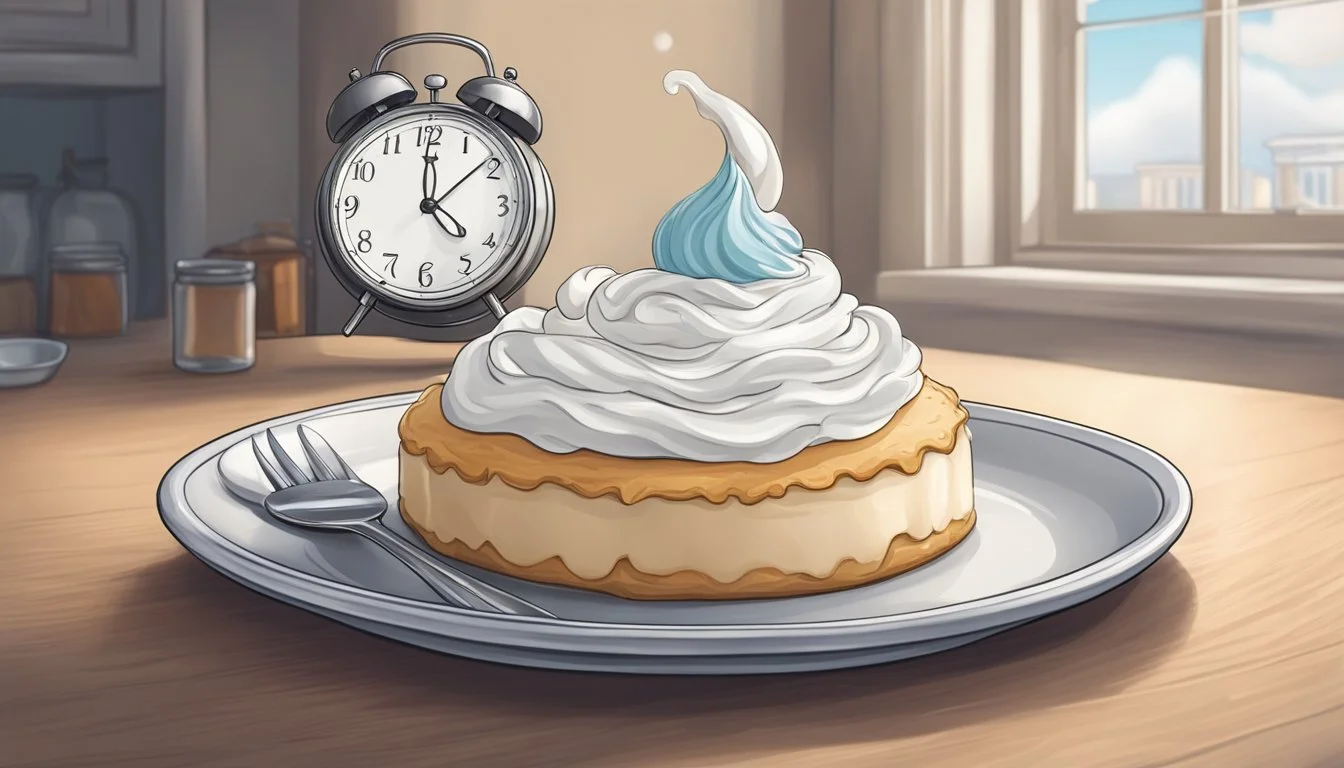How Long Does Whipped Cream Last?
Shelf Life and Storage Tips
Whipped cream's shelf life can vary based on its form, with different types offering different spans of usability. Store-bought whipped cream that comes in an aerosol can is known to last for a couple of weeks beyond its printed date if it's kept stored properly. The storage conditions play a crucial role in its longevity—the cream should be kept consistently chilled and not exposed to warm temperatures. If frozen, this type of whipped cream can extend its lifespan up to three months; however, it should be removed from the can before freezing for optimal quality.
For homemade whipped cream or whipped cream that comes in tubs like Cool Whip, the shelf life is usually shorter. Homemade whipped cream, when stored properly in the refrigerator at or below 40°F (4°C) and away from the door to avoid temperature fluctuations, can last for a few days. Whereas products like Cool Whip can last for 7 to 10 days after being opened, and if unopened and kept frozen, they can last for 3 to 4 months.
Ensuring that whipped cream is consumed before it spoils is important for both taste and food safety. Signs of spoilage include an off smell, changes in texture or color, or the presence of mold. If any of these signs are detected, the whipped cream should be discarded. It is always advised to observe these signs and use whipped cream prior to the expiry date to enjoy its best quality and flavor.
Understanding Whipped Cream
Whipped cream is a versatile dairy product loved for its light texture and sweet taste, yet its shelf life varies based on its composition and storage.
Composition and Types
Whipped cream is primarily made from heavy cream or whipping cream, which is a dairy product with a high fat content. Homemade whipped cream is typically created by beating heavy cream with sugar and optionally flavoring it with vanilla or other extracts.
There are several types of whipped cream:
Homemade whipped cream: Made from heavy cream or whipping cream, often includes sugar and vanilla.
Store-bought whipped cream: Can be found in tubs like Cool Whip, which contains stabilizers to prolong its shelf life.
Aerosol whipped cream: Comes in cans and includes additives and propellants.
Whipped Cream Longevity Factors
The shelf life of whipped cream depends on various factors, such as:
Storage: Refrigeration is crucial. Store whipped cream at or below 40°F.
Packaging: Sealed containers or canisters can extend shelf life.
Dairy base: Options like heavy cream, half and half, or non-dairy alternatives each have different spoilage rates.
Additives and stabilizers: Present in store-bought options, these can prolong the longevity compared to homemade whipped cream.
Homemade whipped cream typically lasts for 1-2 days in the refrigerator, while store-bought whipped cream varieties can last much longer due to their stabilizers and preservatives. Aerosol whipped cream can last for weeks past the printed date if unopened and stored properly in the fridge.
Proper Storage Techniques
The shelf life of whipped cream can be maximized by adhering to specific storage methods, which include maintaining the proper temperature in the refrigerator and applying the correct freezing techniques when necessary.
Refrigeration Essentials
To store whipped cream in the refrigerator, one should transfer it into an airtight container to prevent it from absorbing other flavors and odors. It is essential to place the container towards the back of the fridge, where the temperature is consistently cooler. For homemade whipped cream, which is typically less stable than store-bought due to the absence of preservatives, refrigeration is critical, and it should be consumed within 1-2 days for optimal quality.
Freezing Whipped Cream
Freezing is an option for extending the life of whipped cream beyond immediate consumption. Portion the cream into dollops on a parchment-lined tray, spaced out to prevent sticking. Once the dollops are solidly frozen, they may be transferred to a sealed container or a plastic bag for long-term storage. This method is suitable for both homemade and store-bought whipped cream, allowing it to last for several weeks.
Storing Homemade vs Store-Bought
The approach to storing homemade whipped cream differs from that of store-bought varieties, primarily due to preservatives and stabilizers in commercial products. Homemade whipped cream, ideally in an airtight container, should be consumed within 24-48 hours. Store-bought whipped cream, whether in an aerosol can or plastic tub, often lasts longer due to added stabilizers and can be refrigerated as per the manufacturer's instructions. In contrast, for extended storage, the freezer is a viable option for both types, with homemade whipped cream potentially requiring the addition of a stabilizer to maintain its consistency after thawing.
Shelf Life Expectancy
The shelf life of whipped cream varies significantly based on its type and storage conditions. Store-bought variations often include stabilizers that extend shelf life, whereas homemade whipped cream lacks these additives and thus has a shorter span of optimal quality. Proper refrigeration is key for maintaining the best quality.
Store-Bought Whipped Cream
Store-bought aerosol whipped cream, which often contains stabilizers, can last for up to 2-3 weeks in the refrigerator past its printed date. Once opened, it may maintain good quality for up to three months if properly stored in the fridge. Products like Cool Whip, a non-dairy whipped topping, can last for 7-10 days in the refrigerator and 3-4 months in the freezer.
Homemade Whipped Cream
Homemade whipped cream, made without the preservatives found in commercial products, generally has a much shorter shelf life. It can stay fresh in the refrigerator for 1-2 days. The freshness is highly dependent on the cleanliness of utensils, the introduction of any additional ingredients like sugar, and consistent refrigeration.
Stabilized Whipped Cream Varieties
Stabilized whipped cream, often made by adding ingredients like cornstarch, unflavored gelatin powder, or other stabilizers, can extend the peak quality of the product. Such additions help the whipped cream maintain its consistency and can enable it to last for approximately 3-4 days in the fridge. Stabilized varieties emulate the longer shelf life of some commercial products, but without a broad spectrum of preservatives.
Signs of Spoilage
It is crucial to know how to identify when whipped cream has spoiled to prevent the consumption of an unsafe product. The following indicators are clear signs that whipped cream is no longer suitable for use.
Visual and Textural Changes
Spoiled whipped cream often exhibits noticeable changes in its appearance and texture. Users should be on the lookout for:
Discoloration: A yellowish or grayish hue instead of the creamy white color is a sign of spoilage.
Mold Growth: Any visible signs of mold indicate that the whipped cream must be discarded immediately.
Separation: If the whipped cream has separated into watery and solid parts, it has likely gone bad.
Consistency: A loss of its light, fluffy texture and a turn to a liquid or grainy consistency also signifies spoilage.
Odor Identification
Spoiled whipped cream can be identified by its scent before tasting it:
Off Smell: An odd or sour smell strongly suggests that whipped cream is bad.
Sour Flavor: If after all visual checks are clear, a sour flavor when tasted confirms that the cream is spoiled and should not be consumed.
Health and Safety Considerations
When it comes to dairy products like whipped cream, food safety is paramount to prevent health problems. Since whipped cream is a dairy product, it provides an ideal environment for bacteria growth if not stored correctly. Bacteria such as Listeria and Salmonella, which can lead to foodborne illnesses, thrive at room temperature. It's crucial, therefore, to store whipped cream at a temperature between 35°F to 40°F.
Once opened or prepared, whipped cream's shelf life is limited. Industry and health standards suggest the following:
Aerosol whipped cream: approx. 2-3 weeks in the fridge.
Homemade whipped cream: 3-5 days in the fridge with stabilizers.
Cool Whip: 7-10 days refrigerated.
Mold growth can occur on expired whipped cream, so it's important to inspect the product before use. Signs of spoilage include:
Off smell
Discoloration
Mold presence
Changes in texture
Individuals should discard whipped cream if any signs of spoilage are present to avoid the risk of foodborne illnesses. Furthermore, using whipped cream beyond the "sell-by" or "use-by" date can increase the risk of consuming an unsafe product. However, some products may be safe for consumption a short period after the indicated date if they have been stored properly and show no signs of spoilage. Always prioritize safety by erring on the side of caution and discarding any dubious dairy products.
Extending Whipped Cream's Life
Extending the life of whipped cream involves using stabilizers to maintain freshness and employing proper freezing and thawing techniques to preserve leftover whipped cream. These methods ensure both stability and quality of the whipped cream over time.
Using Stabilizers
Stabilized whipped cream can last longer than its unstabilized counterpart due to the addition of ingredients that enhance its firmness and prevent weeping. Stabilizers such as gelatin or powdered sugar can be used to achieve this effect. Here is a step-by-step guide on using gelatin:
Sprinkle 1/2 teaspoon of gelatin over 1 tablespoon of cold water per cup of whipping cream.
Let it sit for 5 minutes, allowing the gelatin to bloom.
Heat the mixture for 5 to 10 seconds in the microwave until the gelatin becomes liquid and clear.
Cool the gelatin slightly before adding it to the cream at the soft-peak stage.
Using powdered sugar as a stabilizer is also effective since it contains cornstarch, which helps maintain the cream's structure.
Tips for Freezing and Thawing
Freezing whipped cream can preserve its freshness for up to three months. To successfully freeze and thaw whipped cream, one should adhere to the following instructions:
Storing in the Freezer:
Dollop or pipe the whipped cream onto a baking sheet lined with parchment paper.
Place the baking sheet in the freezer until the cream is solid.
Transfer the frozen whipped cream into an airtight container or a zipper bag, and return it to the freezer.
Thawing Leftover Whipped Cream:
Thaw the whipped cream in the refrigerator for a few hours rather than at room temperature to maintain the texture.
Gently stir the whipped cream after thawing to restore its consistency if necessary.
By carefully managing temperature and using the right techniques, one can maintain the quality of fresh whipped cream, even after freezing.
Culinary Uses
Whipped cream is a versatile ingredient pivotal in elevating the textures and flavors in various culinary applications. It is rich in taste and has an airy texture that complements an array of desserts and beverages.
Desserts and Beverages
In desserts, whipped cream acts as a crowning addition to cakes, pies, and pastries, offering a light, sweet contrast to more dense components. It can be piped to create decorative swirls on the top of a layer cake or dolloped onto a slice of pie, where its creaminess balances the tartness of fruit fillings.
For individual servings, parfaits and trifles benefit from whipped cream's layers, interspersed with fruits, custards, or cake crumbles to build complexity of flavors and textures. When it comes to coffee and hot chocolate, whipped cream transforms these beverages from ordinary to indulgent treats. A generous topping of whipped cream on a mocha or cappuccino adds a luxurious texture that slowly melts into the hot drink, enriching every sip.
Whipped cream is also the key player as a whipped topping for sundaes, milkshakes, and other cold desserts. Its cool, creamy consistency pairs perfectly with ice cream, contrasting the chill of the dessert and adding a smooth, melt-in-the-mouth feel.
In summary, whether utilized as a garnish or a key ingredient, whipped cream enhances the sensory enjoyment of desserts and beverages with its distinctive texture and flavor.
Troubleshooting
Sometimes whipped cream doesn't hold its desirable texture or volume. Understanding how to address this can extend the usability of the cream, ensuring it doesn't go to waste.
Re-whipping Processes
When whipped cream loses its volume or starts to separate, it might be possible to revive it using a re-whipping process. The key to re-whipping is to do it gently to avoid turning the cream into butter. If the whipped cream is only slightly over-whipped with a grainy texture, one can add a few tablespoons of fresh cream and whip it on low speed to incorporate gently. This can help regain some of the lost volume and smooth texture.
For those using an electric mixer or a stand mixer, it's crucial to avoid high speeds during this process. Re-whipping on a low speed setting helps control the texture more efficiently. If there is significant liquid separation, the individual may need to strain off the liquid before attempting to re-whip.
A gentle and patient approach will help maintain the airy quality of the whipped cream and prevent it from becoming overly dense. It's a delicate balance to strike, as overworking the cream can lead to butter rather than restoring its creamy, fluffy consistency.
Practical Tips for Consumers
When purchasing whipped cream and managing leftovers, consumers should focus on product type, storage conditions, and usage to maximize longevity and safety.
Purchasing and Usage Recommendations
Buying Whipped Cream:
Cans: When choosing store-bought aerosol whipped cream, always check the best by date on the can. Aerosol cans of whipped cream can maintain quality until this date if unopened and stored properly.
Tips: For homemade whipped cream, opt for heavy or whipping cream due to their higher milk fat content, which is crucial for creating stable whipped cream.
Using Whipped Cream:
Aerosol Cans: To use, shake the can well and dispense by holding the can upright to keep the quality of the cream and prevent malfunction of the nozzle.
Leftover Whipped Cream: If not using immediately, homemade whipped cream can be kept in the fridge for a few hours without stabilizers, and up to five days with stabilizers like gelatin.
Managing Leftovers
Storing Leftover Whipped Cream:
Homemade Whipped Cream:
Without stabilizers: Consume within a few hours.
With stabilizers: Store in an airtight container and refrigerate for up to five days.
Store-Bought Aerosol Whipped Cream:
Refrigerate after opening and use within two weeks if no signs of spoilage are present.
Freeze the product (excluding the can) for up to three months, but thaw properly before use.
Expiration Date:
Does Whipped Cream Go Bad? Yes, whipped cream can spoil, mainly if the expiration date has passed or it is not stored correctly.
Visual Inspection: Always inspect the cream before use; if the texture, smell, or appearance has changed, discard it to prevent foodborne illness.
Conclusion
The longevity of whipped cream is influenced by several factors, including its type, storage conditions, and whether it contains stabilizers. Homemade whipped cream, without stabilizers, is best used within 1-2 days when refrigerated. For a slightly extended shelf life, one can add stabilizers such as cream of tartar or gelatin, potentially keeping it fresh for up to three days.
Store-bought aerosol whipped cream typically has a longer refrigerated shelf life of two weeks. It's essential to heed the printed expiration date, but often the product remains safe to consume for up to 2-3 weeks past this date if unopened and refrigerated. Once an aerosol container is opened, the cream may last up to three months when stored properly in the refrigerator.
It's crucial to recognize signs of spoilage like mold or separation, which are indisputable indicators that the whipped cream is no longer safe to consume. At any signs of spoilage, the product should be discarded.
Freezing is also an option for extending the lifespan of whipped cream. When frozen, store-bought whipped cream (removed from its aerosol can) can last for three months. However, frozen whipped cream may experience textural changes upon thawing.
In summary, for whipped cream to last as long as possible, good storage practices are key, involving a consistent and adequate refrigeration temperature or freezing when appropriate.


